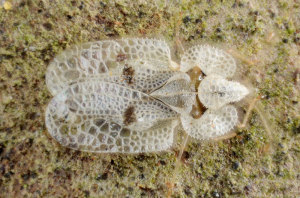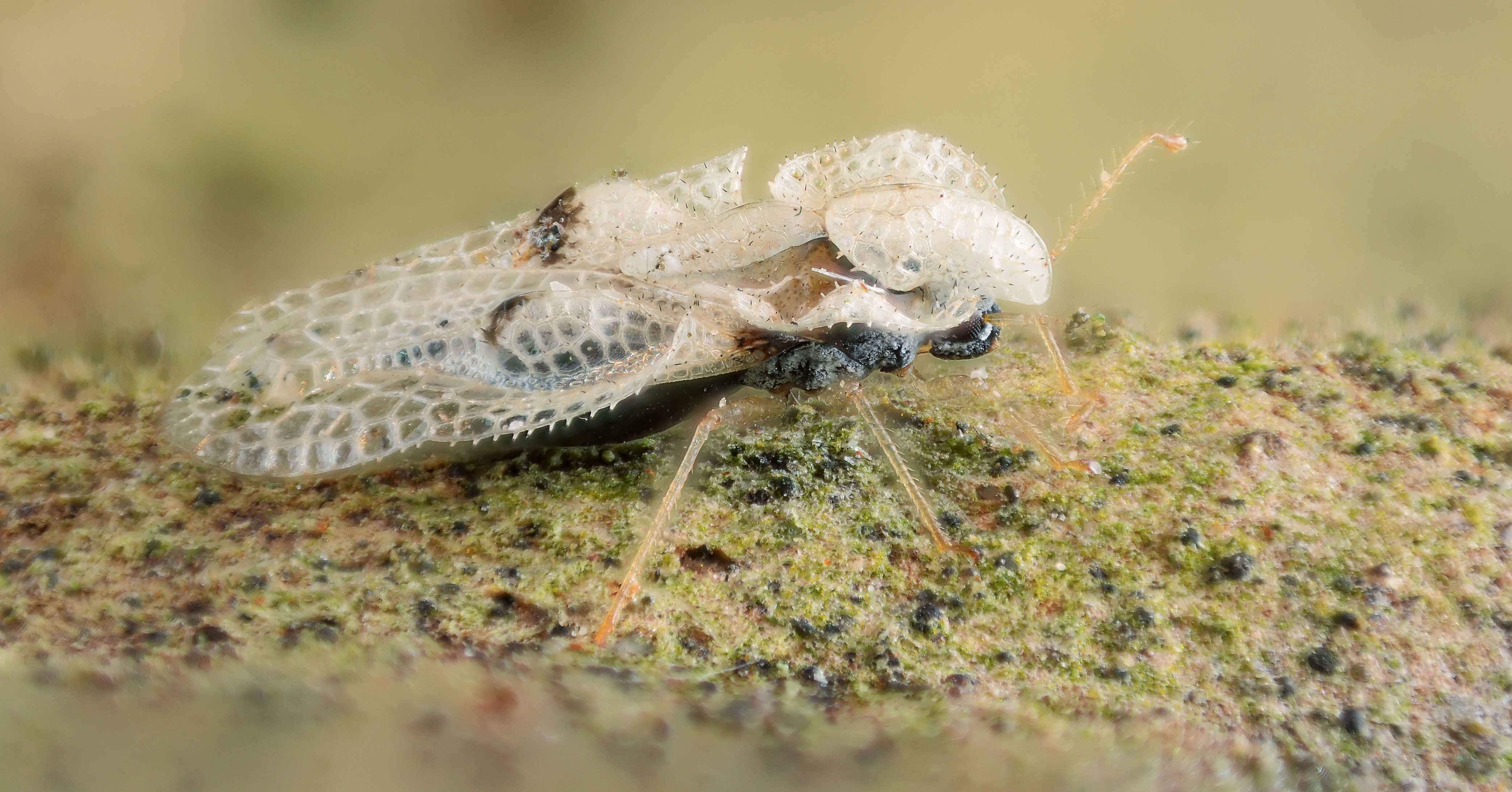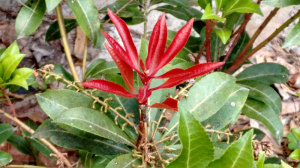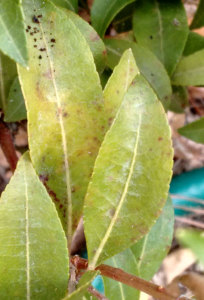Lace Bug damage is on the rise. Their favorite host plant is Andromeda (Pieris spp.). Like the boxwood, andromeda have become a popular landscape plant because the deer do not like to eat them. While they don’t have showy flowers, they are a good substitute for rhododendrons and mountain laurel wherever hungry deer roam. They are a tough shrub that can take the heat of a foundation planting while tolerating a partial shade environment.
It is the andromeda in the heat of full sun exposure that are most susceptible to the lace bug. This insect is difficult to see because it lives on the underside of the leaf. They attach their mouth parts and suck the chlorophyl and other nutrients from the leaf causing a yellow “stippled” look to the foliage. A few lace bugs will make the plant look sickly, and a heavy infestation can begin to compromise the health of the shrub.

Sycamore Lace Bug by Gilles San Martin is licensed under CC SA 2.0
As the name implies, the lace bug has “lacy” wings. It really doesn’t look like much considering the damage it can do. If you suspect your plant is being damaged, the time to look for them is in June, July and August. Turn over a leaf and you will probably see one or a few sitting there feeding away. They might even hop on your finger. Their lacy wings are not much good for flying.
While the andromeda is the lace bug’s favorite shrub, it can also be found doing damage under the leaves of rhododendrons, azaleas and cotoneaster. It will cause that same stippled look to the foliage of these plants.
(While you looking at your rhododendron, you may want to think about DeerPro Deer Repellent — one application protects evergreen shrubs from September through October). Protection for your beautiful evergreens is just a click away.)
Lace bug can be kept in check with a dormant oil spray in early spring. However, if you have a heavy infestation you will need a systemic insecticide to get them under control.
So, if your shrubs are looking a bit yellow and have that stippled look, take a peek under the leaves. You may find the destructive lace bug hiding in plain sight.
Featured image (above): Corythucha ciliata (Hemiptera, Tingidae) Sycamore Lace Bug by Gilles San Martin is licensed under CC SA 2.0
RESOURCES:
‘Lace Bugs’ – UCONN College of Agriculture and Natural Resourcecs
‘Control of the Andromeda Lace Bug and the Holly Leaf Miner’ – John C. Schread (PDF)
‘Andromeda, Japanese (Pieris)’ – The Connecticut Agricultural Experiment Station




Recent Comments